Fennel is found in the wild all over California, and much to my amazement, many people consider it a weed… an aromatic, anise-flavored weed.
I grew a small patch of bulb fennel (Foeniculum vulgare) in my garden when I lived in Los Angeles, but my old neighbor across the street had fennel growing en masse on his property.
Every summer, as the flowers started blooming in abundance (and releasing the seeds that make it such a notorious weed), I watched him cut down stands of tall, leggy stalks, sending the sweet scent of fennel through the air and into our yard.
The plants came back anew in winter, and by summer, we had flowers again.
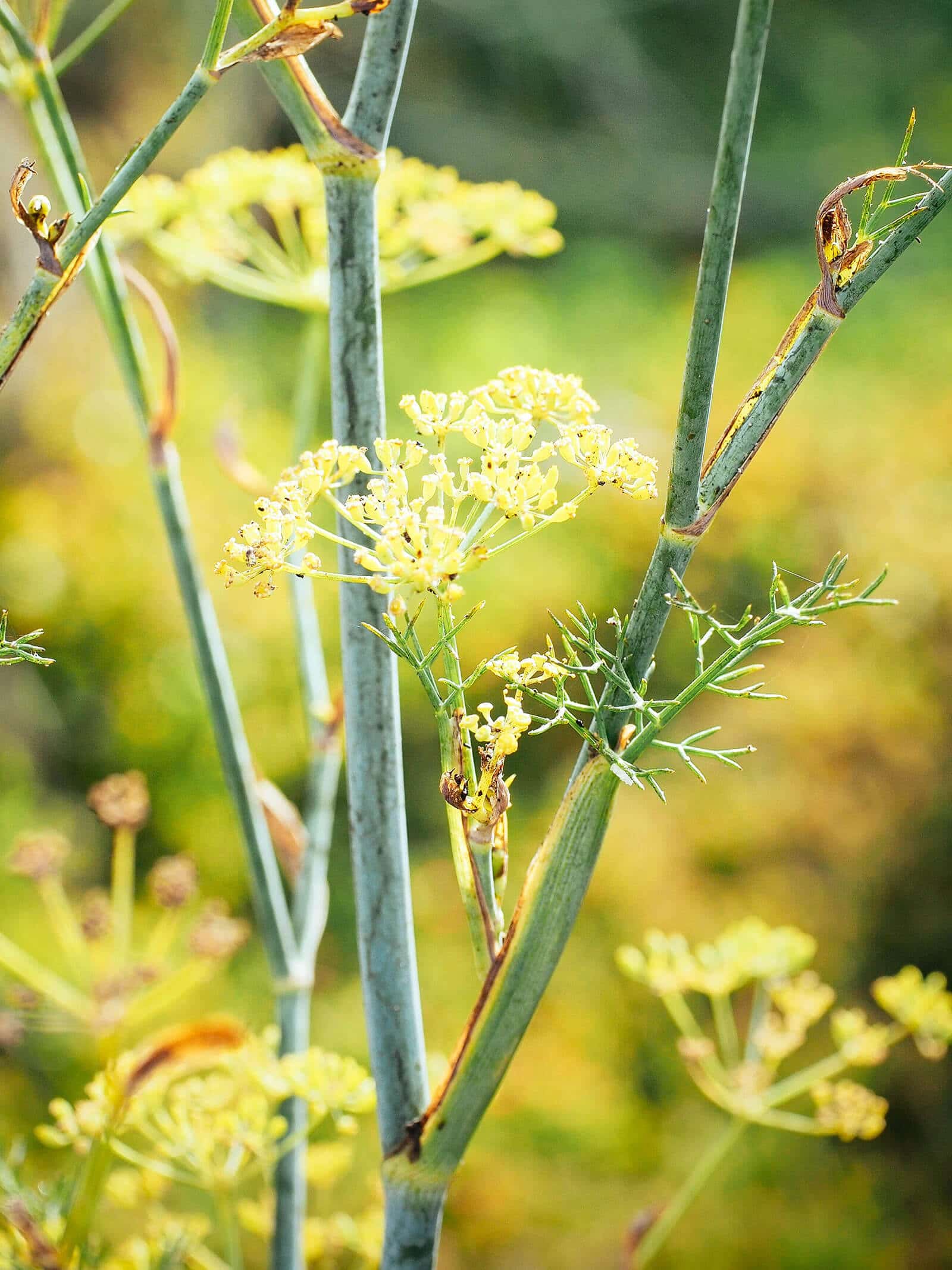
Where does fennel grow?
Fennel originated on the shores of the Mediterranean, making the California coast an ideal environment for this perennial herb to thrive. It’s become naturalized along seashores and riverbanks, roadsides, pastures, and other open areas, growing year round in the dry, mild climate.
While fennel is classified as an invasive in this part of the world, it’s actually an important food source for pollinators. Bees, butterflies, and other insects are highly attracted to its umbels (umbrella-shaped flowers) because they’re easy to land on and collect nectar.
In the home garden, fennel is a beneficial plant that can easily be controlled if it isn’t allowed to go to seed.
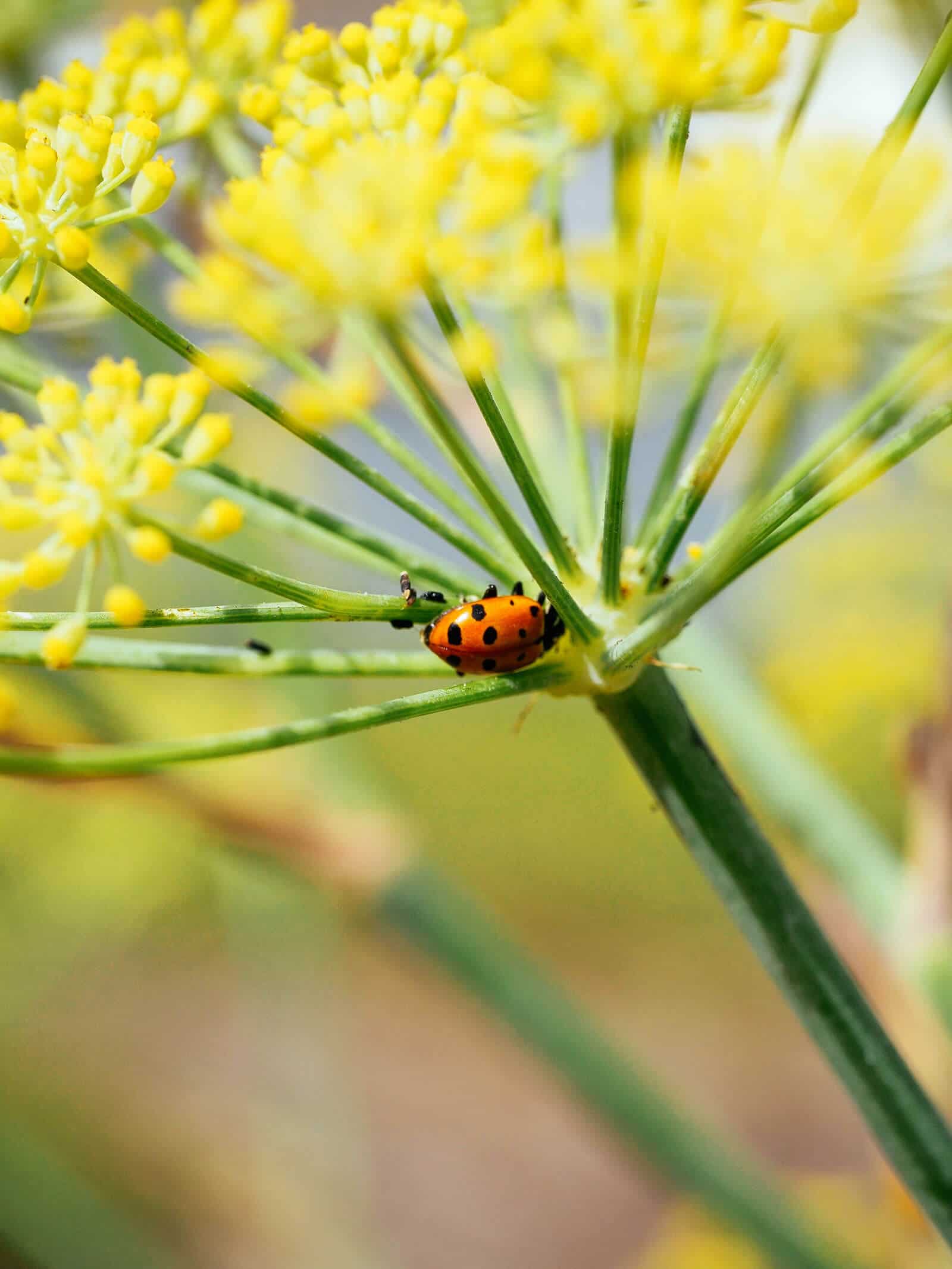
Can you eat wild fennel?
We usually treat fennel as a spice (for its dried seeds), an herb (for its fragrant leaves), or a vegetable (for its tender bulb), and most of its uses revolve around cultivated varieties like Florence fennel and bronze fennel.
Then there’s the fennel you see in the wild, splashing hillsides with their cheery color, and you might wonder: Can you harvest and eat wild fennel?
Yes!
Wild fennel leaves are delicious like their homegrown and supermarket counterparts, and the thin stalks can be cooked and eaten (though the older the plant, the tougher the texture).
And while wild fennel doesn’t grow a bulb at its base (at least, not one that we’d enjoy eating), it does offer something special that’s even more coveted in the culinary world: fresh, warm, golden pollen.
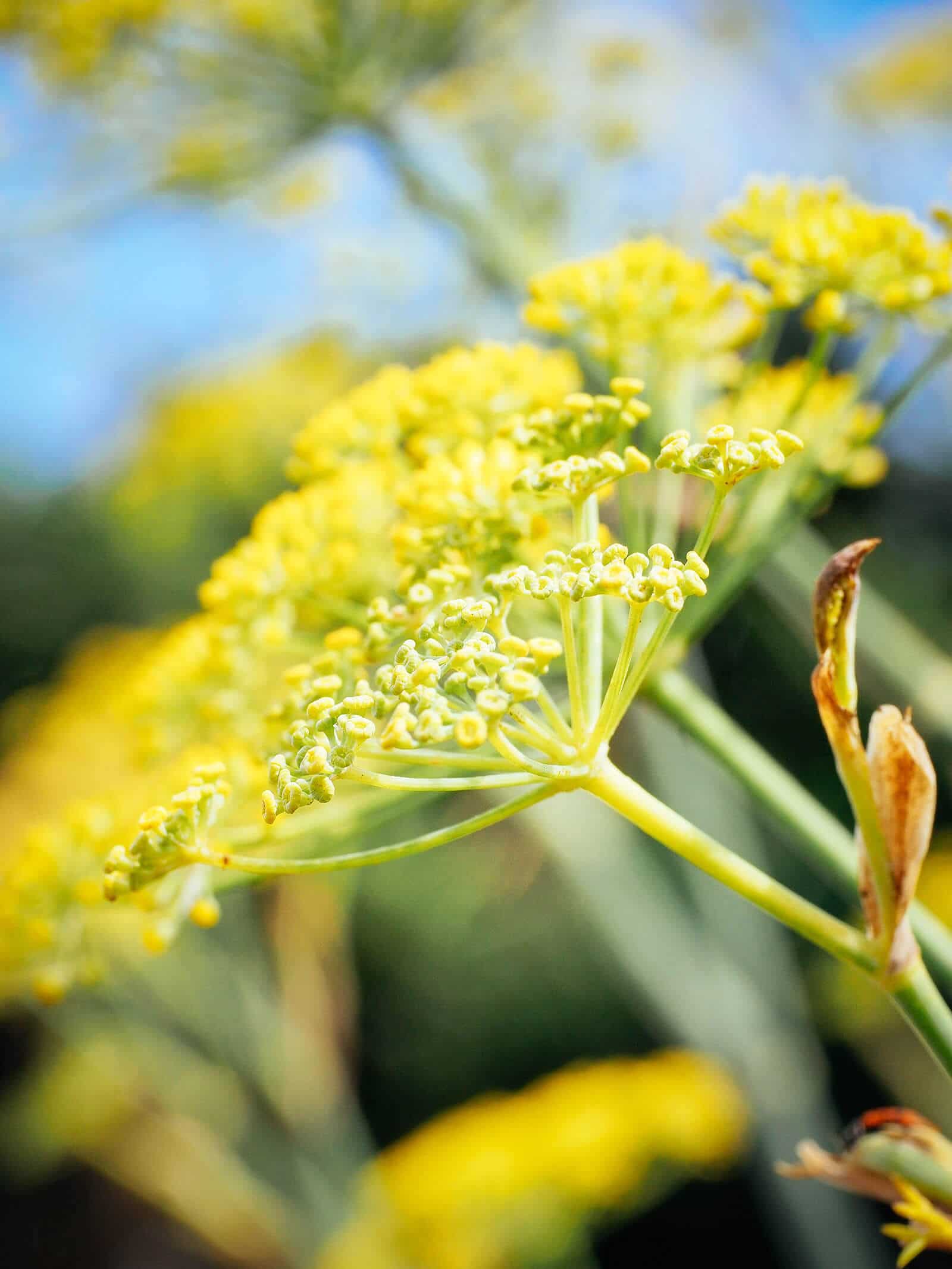
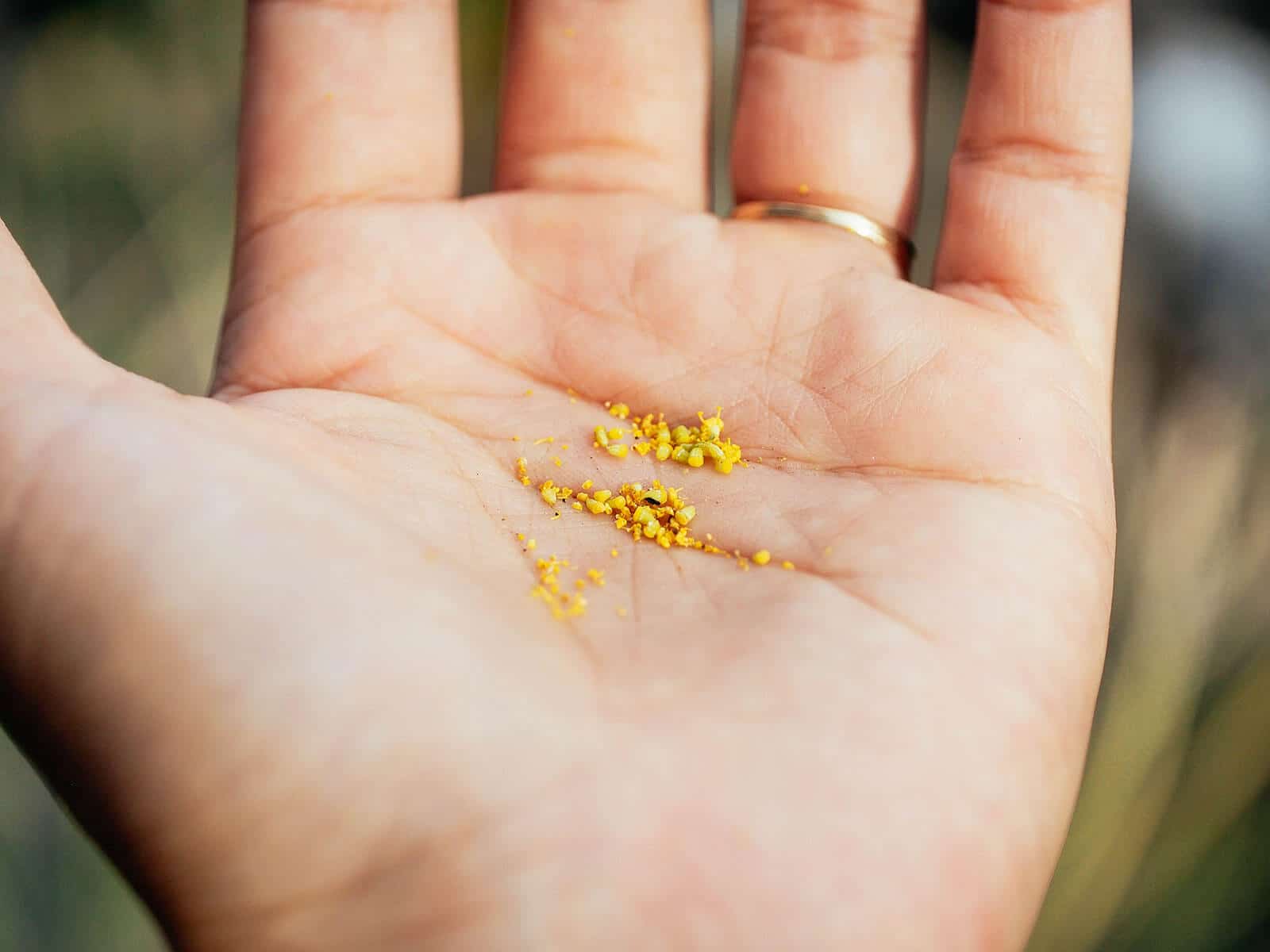
Fennel pollen is a rare and expensive spice much like saffron is, and in California, it grows with wild abandon.
It’s cherished not because of how hard it is to gather, but for how little pollen you retrieve from a single flower head.
A large bloom may only yield an eighth of a teaspoon at most, so collecting enough for your kitchen requires lots of flower heads and lots of patience.
This is why wild fennel is such a source of joy for foragers in the summer. With endless fields of them, you can gather as many flowers as you need to fill a small spice jar.
Try this: Get More Organized With This Simple DIY Spice Drawer Hack
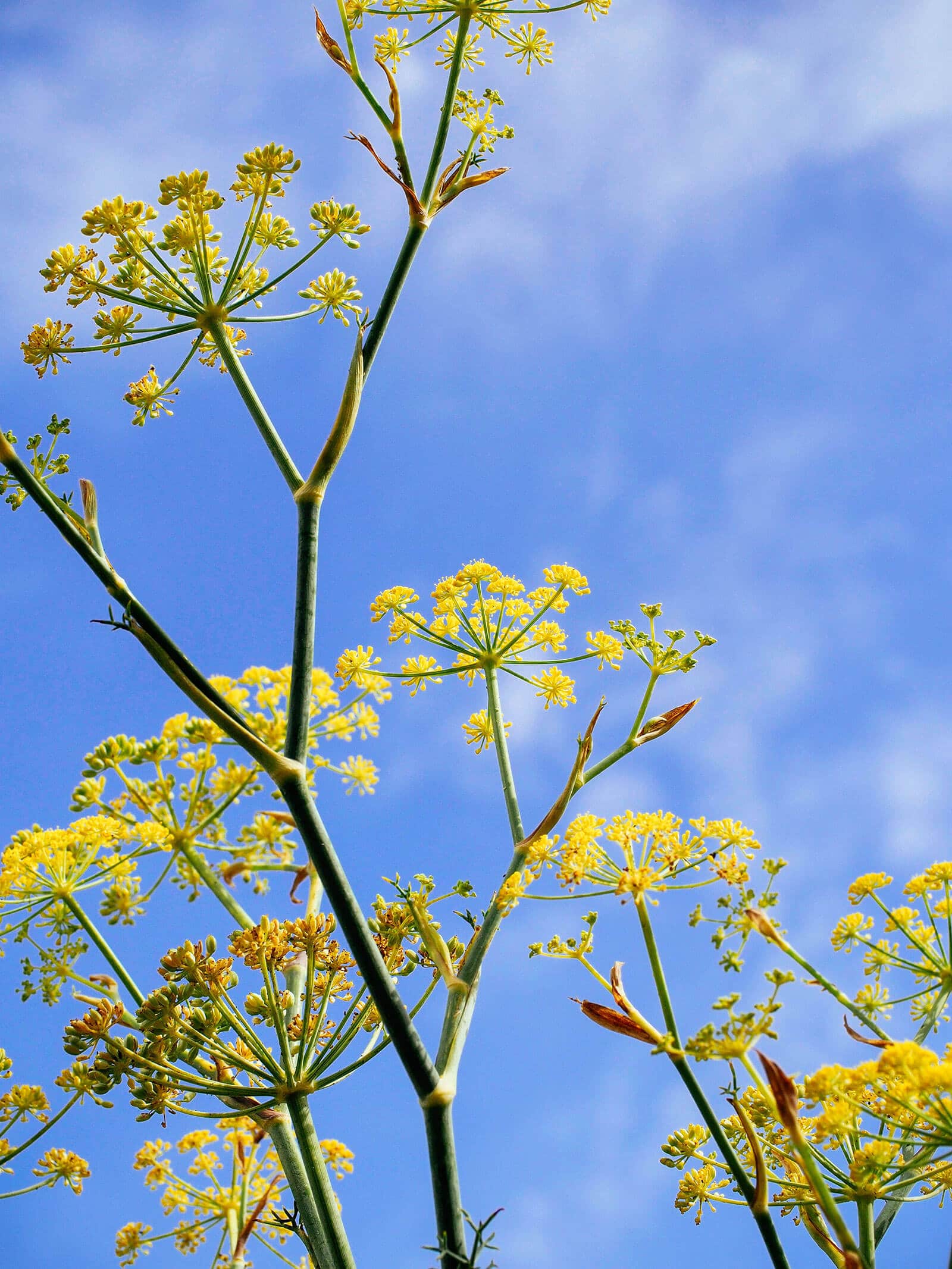
Fresh fennel pollen vs. dried fennel pollen
Fresh fennel pollen shares the same sweet-scented notes as fennel fronds, but its flavor is more nuanced, more dynamic. Every pinch of fresh fennel pollen hints of licorice, lemon, and marshmallows.
You’ll find these intriguing notes in dried pollen as well, but the flavors (while still wonderful) are somewhat subdued.
If you pick your own wild fennel pollen, you’ll get to experience flavor you can’t buy.

How to pick your own wild fennel pollen
Dried fennel pollen
Dried fennel pollen is the easiest to collect, as all you need are a few bundles of fennel flower heads.
Place them upside down in a paper bag, tie the end, and allow them to dry. Give a shake and the pollen will fall to the bottom of the bag.
Fresh fennel pollen
Fresh fennel pollen is what I prefer and though it takes a little more time and effort to collect, it’s worth trying at least once. (As a reminder, steer clear of roadside fennel that may have been exposed to things you don’t really want in your food.)
To harvest fennel pollen, gather as many flowers as you can and shake each one onto a sheet of parchment. The pollen will drop from the flowers, and you may get a few of the tiny flower buds as well.
(Some people take the extra step of separating the pollen from the buds, but I don’t bother — I find them equally delicious.)
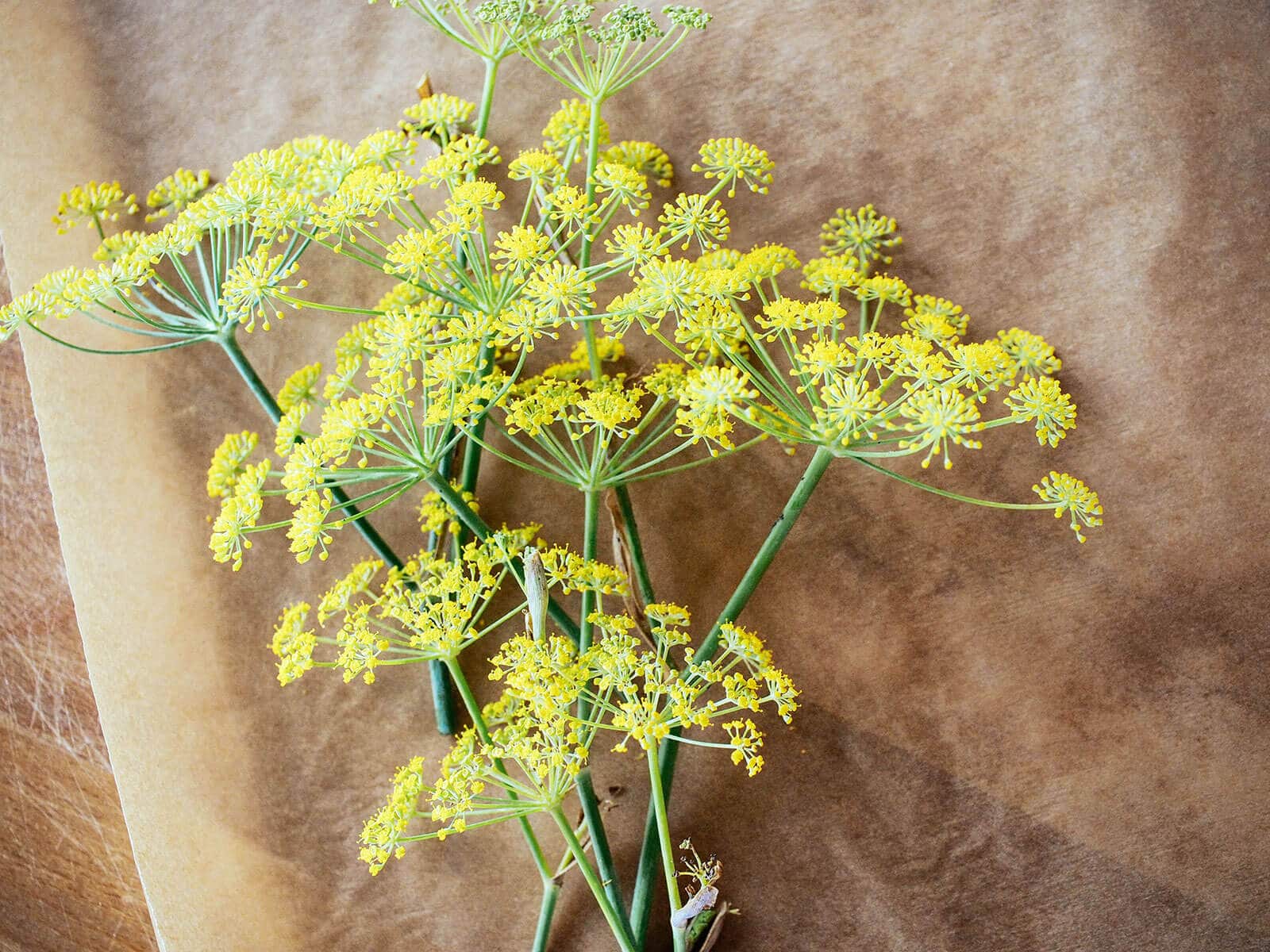
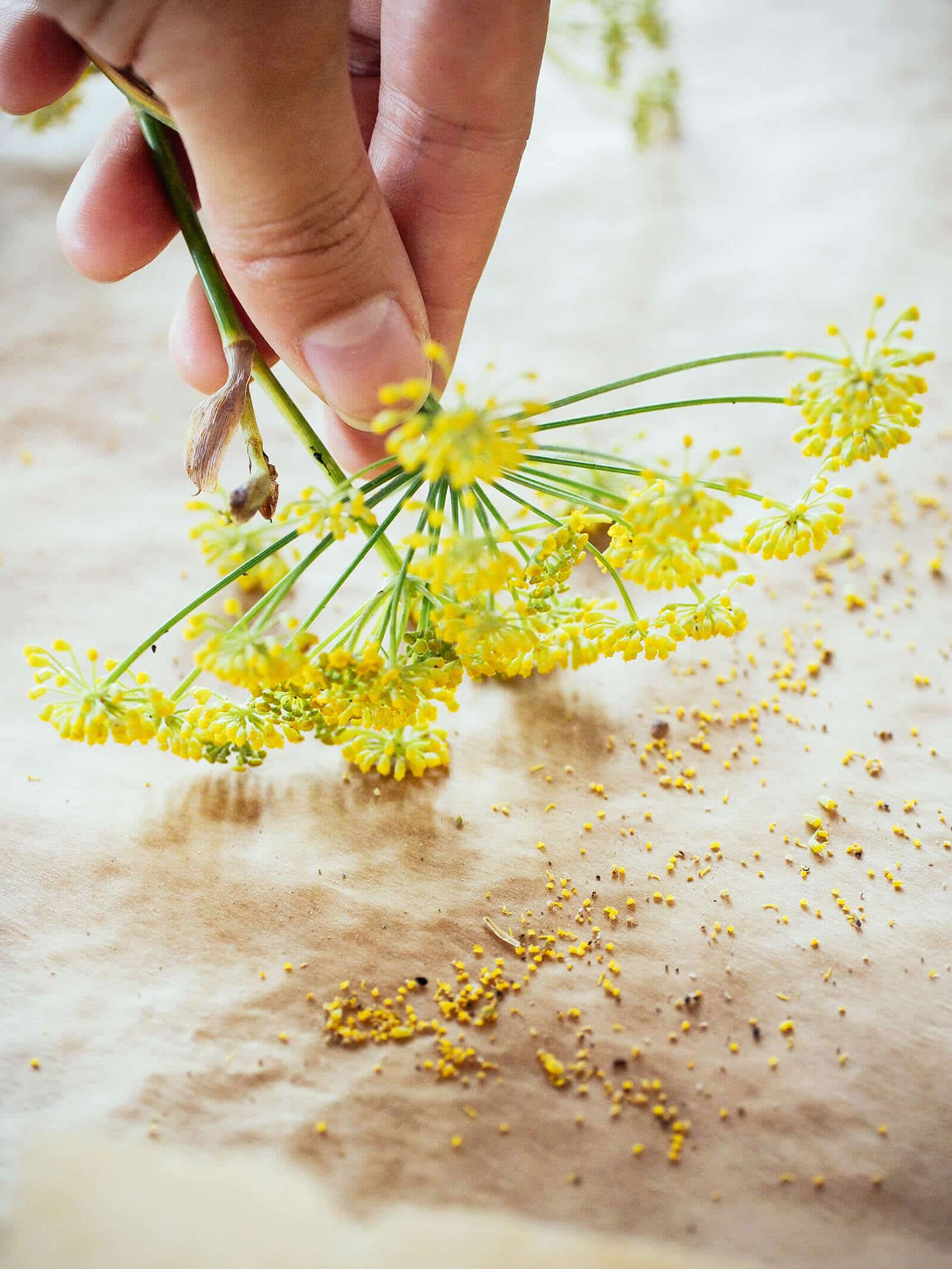
To maximize your harvest, you can rub two flower heads together gently to encourage more pollen to fall.

Its brilliant golden color just swells with summer sunshine. After all, that’s when it thrives.
Store the fennel pollen in a small jar and try to use it while it’s fresh. If your kitchen stays very warm in the summer, it’s best to keep fresh pollen refrigerated if you don’t cook with it right away.

How to use fennel pollen
Unlike dried pollen, which is crusty and hard, fresh pollen is delicate and soft.
It can go wherever fennel or anise may go to accent a dish: on fish or shellfish, pork or chicken, barbecued ribs or sweet sausages.
You can use it as a dry rub for a steak (a little goes a long way) or a garnish for soups of all kinds, especially savory and creamy ones of tomato, potato, or leek. It’s perfect on bouillabaisse and cioppino.
Sprinkle it on ratatouille and roasted vegetables, or even roasted ratatouille. Try a generous pinch on rustic home fries with parsley or delicate pastas with mint.
Fennel pollen also plays nice with sweets: dust a batch of buttery cookies with it, or add it to muffins and tea cakes.
Start with less than you think you need, as it’s quite a potent spice.
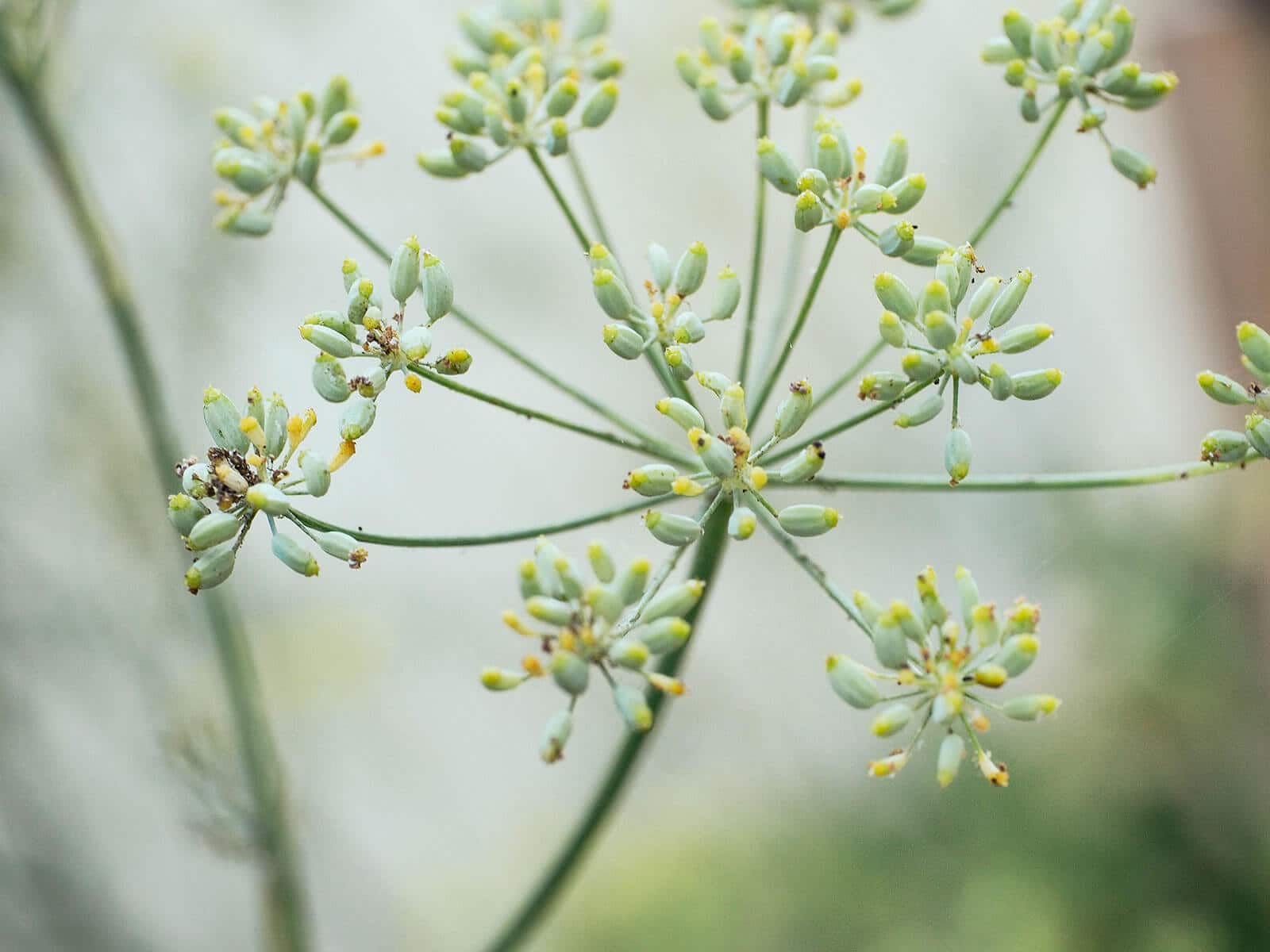
How to collect and use green fennel seeds
In your foraging, you may also come across flower heads that have started to set seed, but aren’t quite ready to drop yet.
Rather than waiting for the seeds to dry out, gather them while they’re still green to use as an herb in your cooking.
Green fennel seeds pull easily off the stems with your fingers and should be kept in an airtight container in the fridge, where they’ll stay fresh for up to five days.
So what do green fennel seeds taste like?
Think juicy anise candy.
I like them stirred into homemade tomato sauce while it’s simmering on the stove. A spoonful of green fennel seeds also makes a pretty garnish for a shaved fennel salad.
Try it and see how you like it compared to dried fennel seed!
Read more: Make Your Own Magnetic Spice Rack
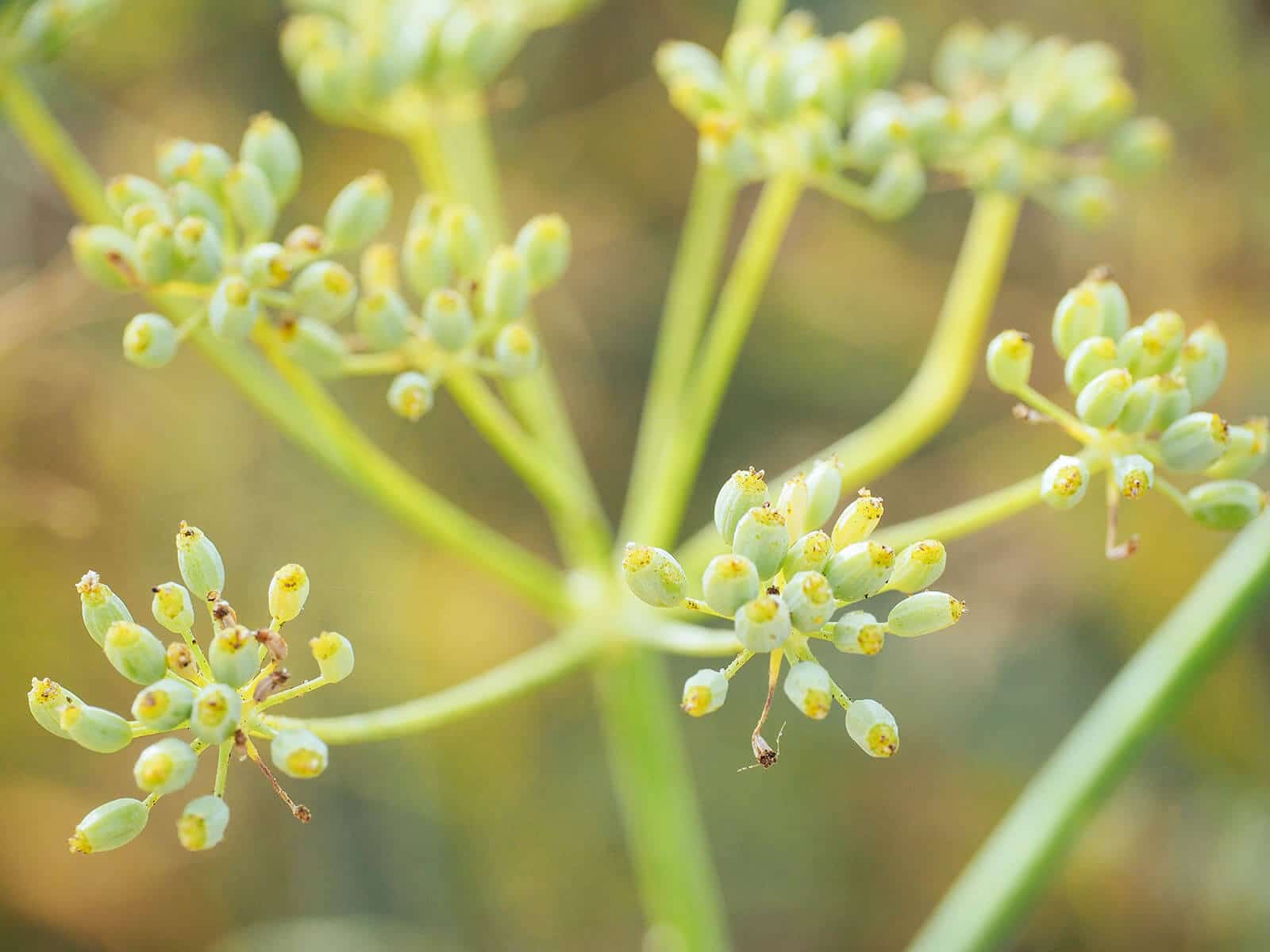

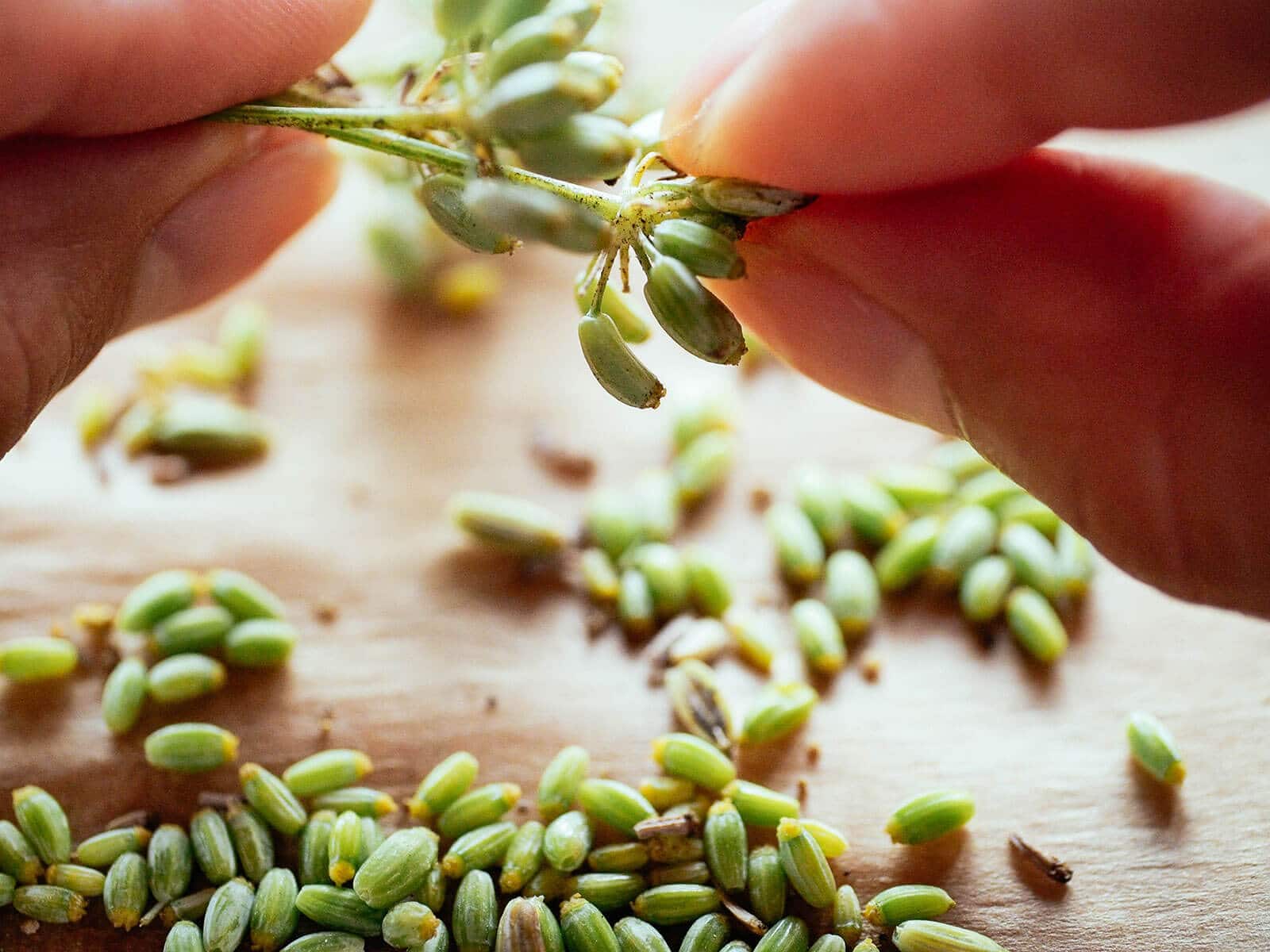
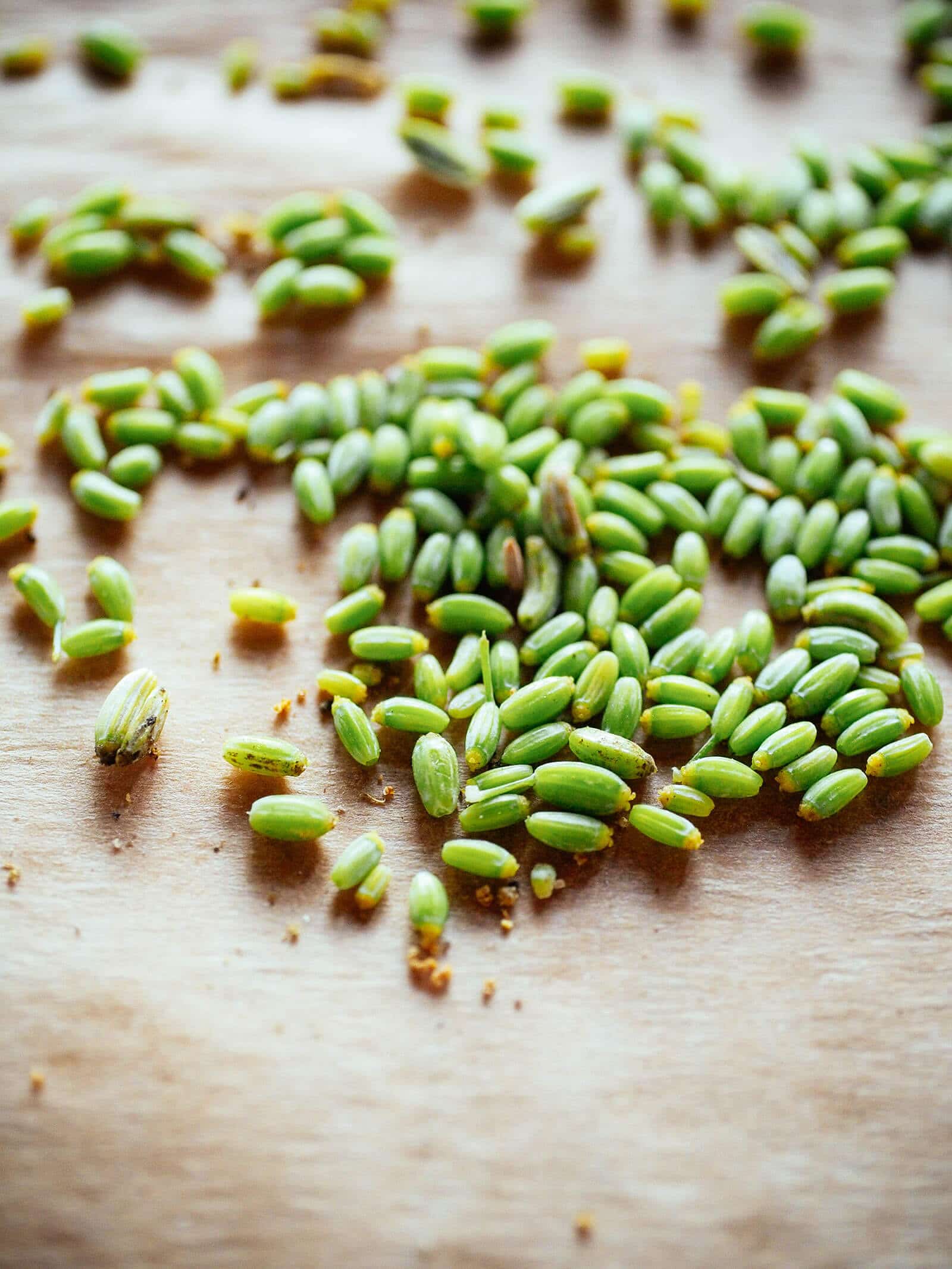
This post updated from an article that originally appeared on July 28, 2014.


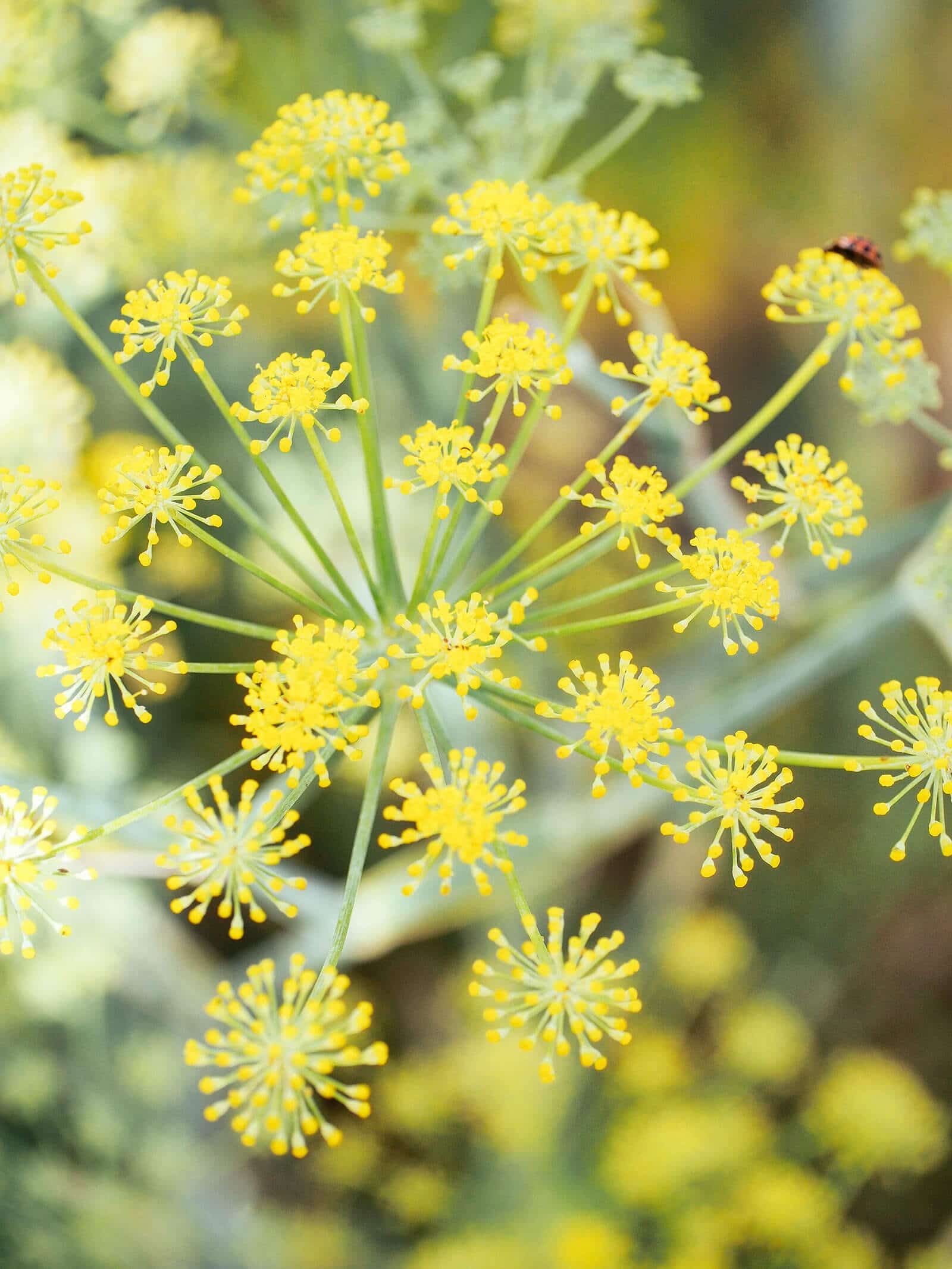













I have a backyard gone wild with fennel. When the flowers are yellow but in the shape of the seed, have they begun the seeding process? That is, can they still be harvested for pollen? Can you describe what the flowering process looks like? i.e. green, yellow closed, yellow open, then what?
I just returned from a 3 week trip to Sicily where we visited the Ravida factory. We bought fennel salt which was one of our prized condiments!!
I live in Texas where fennel does not grow wild; I am growing bronze fennel in my garden and have started harvesting the pollen.
Great pictures and information!!
I LOVE this article! I realize it’s been some time since you posted this, so I hope you see this article. This herb is foraged in Greece for the greens! There are delicious Greek recipes with these greens as one of the main ingredients.
I’m so glad you enjoyed this!
From WP:
The name “Marathon” (Μαραθών) comes from the herb fennel, called marathon (μάραθον) or marathos (μάραθος) in Ancient Greek, so Marathon literally means “a place full of fennels”. It is believed that the town was originally named so because of an abundance of fennel plants in the area.
after spending lots of money on imported italian fennel pollen, i am excited to harvest my own now, thanks to you and your great information. i am a cheese maker and like to roll my goat’s milk brie in fennel for a delicious treat.
That sounds delicious! I’m so glad this was helpful for you!
AMAZING website, information & images – one of the best I have ever seen. Thank you!!
Your wonderful comment is much appreciated! Thank you for reading!
luckily, fennel grows abundant and wild here in Los Angeles. we have two robust plants; i appreciate your comments about harvesting the pollen. going to try immediately.
I’ve never thought of foraging for wild fennel, but I’ve seen it in plenty of fields where I live. Thanks for the great tips!
This coveted spice could be growing wild right in your own yard. Harvesting Wild Fennel Pollen http://t.co/qDVlPSw3gx #gardenchat #foraging
Fresh golden pollen hints of licorice, lemon, and marshmallows. Harvesting Wild Fennel Pollen http://t.co/fKRih340m1 #gardenchat
This gourmet spice grows wild all over California. Harvesting Wild Fennel Pollen http://t.co/qjcJa5pCP4 #foraging
Summertime is a forager’s dream for this coveted spice. Harvesting Wild Fennel Pollen http://t.co/LxVuFGkxvN #gardenchat #foraging
The flowers are blooming in abundance right now, so go out and gather them! Harvesting Wild Fennel Pollen http://t.co/WGGVrfNbbB #gardenchat
Very cool step by step in this blog post … isn’t it amazing what some people see as a “weed”? I love fennel … it is such a great addition to our herb garden.
I like any weeds I can eat. 🙂
It’s also great for infusing into liquor!
Good call!
Blogged on Garden Betty: Harvesting Wild Fennel Pollen http://t.co/DY4djWAsAQ